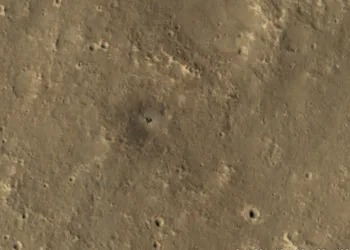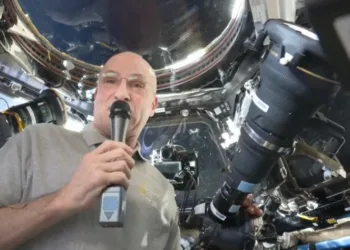NASA has introduced an exciting preview of a full-sized prototype for a series of six telescopes that will facilitate the detection of gravitational waves from space in the coming decade. This initiative, called the Laser Interferometer Space Antenna (LISA), represents a partnership with the European Space Agency (ESA).
Gravitational waves are distortions in the fabric of space-time, triggered by dramatic cosmic events like the merging of black holes. LISA’s mission is to identify these waves by employing lasers to measure minute changes in distance—precisely down to picometers, which are one-trillionth of a meter—between three spacecraft arranged in a triangular setup. Each side of this extensive arrangement will stretch nearly 1.6 million miles (or about 2.5 million kilometers).
According to Ryan DeRosa, a researcher at NASA’s Goddard Space Flight Center, “Each spacecraft will host twin telescopes that will both send and receive infrared laser beams to monitor their counterparts.” NASA is responsible for providing all six telescopes for the LISA mission.
The prototype, referred to as the Engineering Development Unit Telescope, will play a crucial role in the development of the flight hardware. It was subjected to a thorough inspection after delivery in a darkened clean room at NASA Goddard in May. The telescope is crafted from a unique amber-colored glass-ceramic that retains its shape across a wide range of temperatures, and its mirror is coated with gold.
This innovative design not only enhances the reflection of infrared lasers but also minimizes heat loss in the frigid environment of space, allowing the telescope to function effectively at temperatures close to that of a typical room. Produced by L3Harris Technologies in Rochester, New York, the Engineering Development Unit Telescope exemplifies significant advances in material technology.
Its primary mirror is composed of Zerodur, another amber-hued glass-ceramic renowned for its stability and precision. The LISA mission is expected to launch in the mid-2030s, paving the way for revolutionary discoveries in the field of astrophysics.









